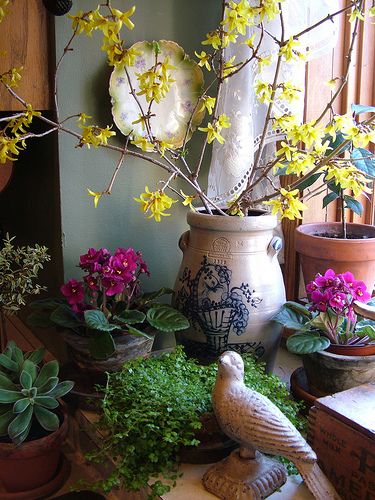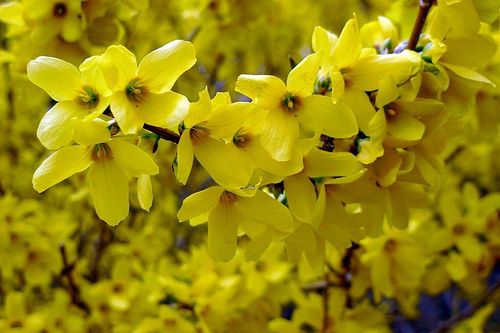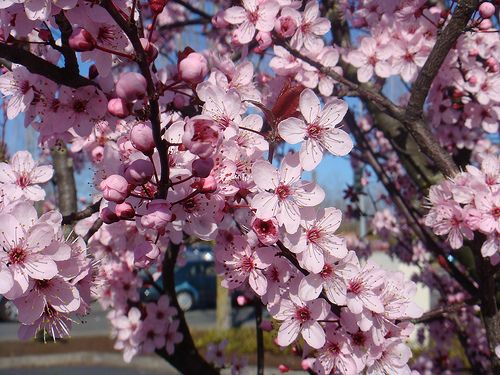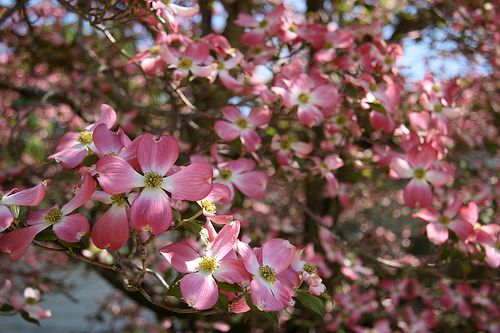
Whether you you’re waiting for spring to plant your vegetable garden or if you actually have a winter garden, you’re probably spending a lot more time indoors about now. So, we’d like to interrupt this vegetable blog to bring you a moment to enjoy the simple pleasures of flowers.
Indoor flowers are a warm and welcome sight when winter is at its darkest and many flowering trees and shrubs can be coaxed into wearing their spring dresses much earlier than they were originally scheduled. You may have forced bulbs in the cold months but have you tried this with spring-blooming shrub and tree branches?
When to Cut Branches
When you notice the buds begin to swell it’s time to cut some branches for forcing. Check out the limbs at the top of the plant. They’re be the ones that will flower the best because they have the most flower buds and the buds are closely spaced, which make the blossoms fuller on the branches once they bloom. Pussy willow branches are a favorite, but if you use them, be sure to remove the scales (covers) from the buds. Also when the tips become full and furry, empty the vase of water for the duration or the stems will root and drop the buds.
Two Methods of Forcing
Before using any container, wash it well and add a little chlorine bleach in the final rinse (no matter which method you use). Watch the water level in the arrangement, too. Branches transpire (lose water) as they develop and you’ll need to add more water a couple of times a week. If the water and vase are kept very clean, flower-keeping chemicals aren’t necessary.
The Cold Method:
- Cut branches from tree or shrub at a sharp angle.
- Place the branches into a pail of cold water in a garage, store room or other cold room for two days.
- Fill clean vases with cool water, re-cut branches and arrange in vase full of fresh water.
- Bring bouquet indoors to enjoy.
The Warm Method:
- Place cut branches in bath temperature water ( 90 – 110 degrees).
- Wrap branches and container in sheets of plastic.
- Set in a warm room overnight.
- Re-cut and arrange in clean vase of fresh water.
Like magic, the dormant buds on branches are awakened in our warm, humid homes.
Of course, there’s nothing wrong with simply sticking them into water and setting them in a sunny place. They’ll eventually bloom, but the other methods will give you some control over the time frame.
Ideal Plants That for Forcing
Below is a list of flowering trees and shrubs that work well for forcing. The time from the bud stage to blossom depends on when you cut the branches from the plant, so I included an approximate time table, which makes it possible for you to have blooming branches from late winter to mid-spring.
- Forsythia (Forsythia spp.)– Cut in early January, forcing time is 1-3 weeks, blooms last 7 days.
- Flowering Plum (Prunus spp.) – Cut in late January, forcing time is 3-4 weeks, blooms last 10 days.
- Flowering Peach (Prunus spp.) – Cut in late January, forcing time is 4-5 weeks, blooms last 7 days.
- Flowering Cherry (Prunus spp.) – Cut in January to Mid-march, forcing time is 2-4 weeks, blooms last 7-14 days.
- Flowering Pear (Pyrus spp.) – Cut in late January to mid-March, forcing time is 2-5 weeks, blooms last 7-14 days.
- Japanese Quince, Flowering Quince (Chaenomeles spp.) – Cut in February to mid-march, forcing time is 2-5 weeks, blooms last 4-7 days.
- Pussy Willow (Salix discolor) – Cut in February, forcing time is 1-2 weeks, blooms last indefinitely if allowed to dry.
- Lilac (Syringa spp.) – Cut in early March, forcing time is 4-6 weeks, blooms last 3-7 days.
- Dogwood (Cornus Spp.) – Cut in mid-March, forcing time is 2-4 weeks, blooms last 7-10 days.
- Apple, Crabapple (Malus spp.) – Cut in mid-March, forcing time is 2-3 weeks, blooms last about 7 days.
- Bridal Wreath (Spiraea prunifolia) – Cut in mid-March, forcing time is 2-3 weeks, blooms last 7-10 days.





















Comments
Log in or create an account to post a comment.
Sign up Log in